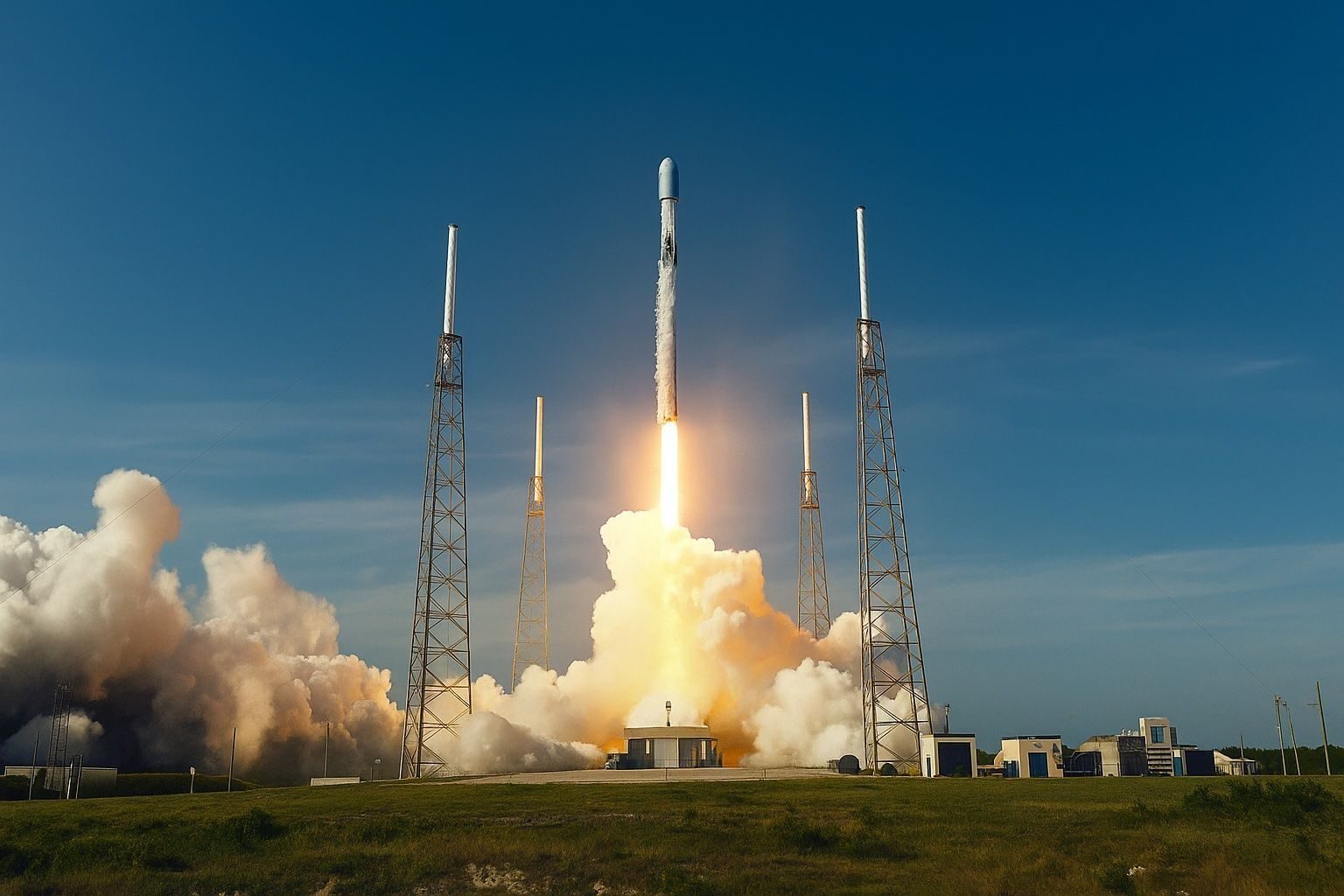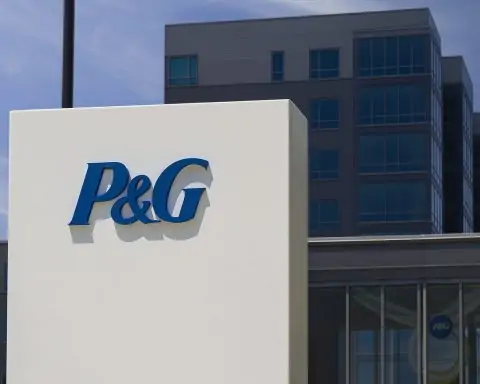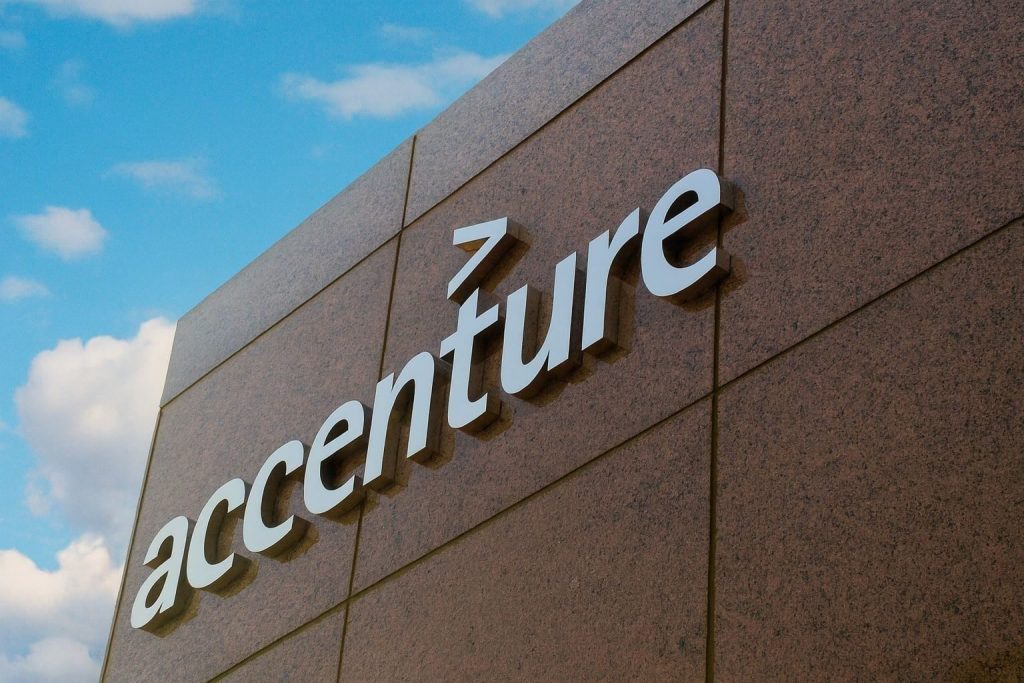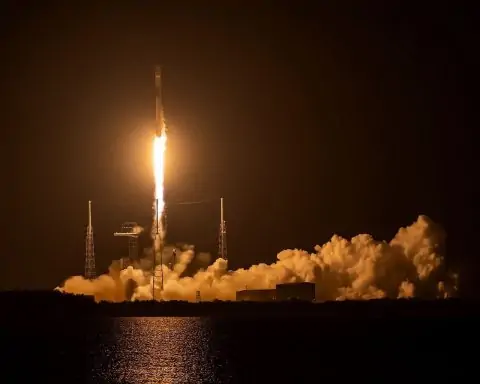Meta description: SpaceX’s Falcon 9 Transporter‑15 rideshare mission lifted off from Vandenberg Space Force Base on November 28, 2025, launching 140 satellites, including a private space telescope, and prompting sonic boom alerts along California’s coast.
VANDENBERG SPACE FORCE BASE, Calif. — November 28, 2025
SpaceX has successfully launched its Transporter‑15 rideshare mission from Vandenberg Space Force Base, sending 140 small spacecraft into sun‑synchronous orbit on a Falcon 9 rocket and setting off sonic boom warnings along California’s Central Coast. [1]
The rocket lifted off from Space Launch Complex 4‑East at 10:44 a.m. Pacific time (18:44 UTC) after a week of weather and technical delays, including a last‑minute scrub on November 26. [2] Within minutes, the veteran first stage booster B1071 separated, arced back toward the Pacific and landed on the droneship “Of Course I Still Love You”, while the upper stage began a complex sequence of burns to distribute satellites over nearly three hours. [3]
The launch was streamed live by SpaceX and carried by major outlets including Fox News, which promoted the event under the banner “WATCH LIVE: Falcon 9 launches the Transporter‑15 mission to orbit.” [4]
A Record‑Setting Falcon 9 Rideshare
Transporter‑15 is the 19th mission in SpaceX’s Smallsat Rideshare Program and the sixth dedicated rideshare of 2025, underscoring how routine multi‑customer launches are becoming in low Earth orbit. [5]
Key stats from today’s flight:
- Launch vehicle: Falcon 9 Block 5
- Booster: B1071 on its 30th flight, making it one of SpaceX’s most‑flown rockets to date [6]
- Orbit: Sun‑synchronous orbit (SSO) around 500–600 km altitude [7]
- Payloads: 140 spacecraft, including CubeSats, microsats, hosted payloads and multiple orbital transfer vehicles (OTVs) that will later release additional satellites [8]
- Recovery: Droneship Of Course I Still Love You stationed in the Pacific Ocean [9]
Spaceflight Now notes that B1071 has previously launched multiple classified payloads for the National Reconnaissance Office, several prior rideshare missions and NASA’s Surface Water and Ocean Topography (SWOT) satellite, making today’s 30th flight another milestone for deep‑reusable hardware. [10]
According to local outlet Edhat, SpaceX had already chalked up more than 520 booster landings and 566 missionsearlier this week; Transporter‑15 pushes those tallies even higher, continuing the company’s aggressive 2025 cadence. [11]
Sonic Boom Warnings Along California’s Central Coast
For residents from Santa Barbara to Ventura and San Luis Obispo counties, the launch wasn’t just a distant streak in the sky — it also came with the possibility of sonic booms.
Local advisories and TV coverage, including KTLA’s reporting amplified via international outlet News.az, warned that people along the Central Coast might hear one or more thunder‑like booms as the Falcon 9 climbed to orbit and its first stage headed back toward the droneship. [12]
Officials emphasized that any sonic booms would be brief and harmless, though potentially startling:
- The booms are produced when parts of the rocket travel faster than the speed of sound, generating shock waves that reach the ground.
- Whether people actually hear them depends heavily on local weather, upper‑level winds and the precise trajectory of the returning first stage. [13]
While most of the landing energy is directed offshore toward the droneship, communities inland and along the coast have reported hearing sonic booms on previous Vandenberg launches, and social media was again filled with anticipation as liftoff approached.
What Flew on Transporter‑15: 140 Satellites, One Rocket
Transporter‑15 is a global orbital carpool. Customers range from space agencies and universities to startups and defense‑adjacent companies. Mission aggregators such as Exolaunch, SEOPS and others handled large blocks of payloads.
Exolaunch: 59 Satellites from 30 Customers
German rideshare specialist Exolaunch is responsible for deploying 59 of the 140 payloads, its largest manifest yet on a single mission. [14]
Highlights from Exolaunch’s cluster include:
- HYDROGNSS‑1 and HYDROGNSS‑2 (ESA): Twin climate‑focused microsatellites designed to measure key “essential climate variables” such as soil moisture and above‑ground biomass, improving models of Earth’s water cycle. [15]
- MICE‑1 (Greece): A 3U CubeSat with an AIS receiver to track maritime traffic in the Mediterranean, along with an IoT payload for monitoring infrastructure via the LAROS system. [16]
- PHASMA (Greece): A pair of 3U CubeSats that will monitor global radio‑frequency spectrum usage, search for interference and contribute to space situational awareness. [17]
- GENA‑OT (ESA/OroraTech): A 16U technology demonstrator showcasing a flexible in‑orbit‑demonstration platform for future missions. [18]
These European‑backed payloads reflect how ESA and partner nations are increasingly turning to low‑cost rideshares to test new space technologies.
SEOPS: Custom Deployers and NASA Tech Demos
Texas‑based SEOPS (Space Exploration & Orbital Systems) plays a major role on Transporter‑15, deploying 11 spacecraft using custom devices like its Equalizer Flex and Ghost Trap deployers. [19]
According to Spaceflight Now, SEOPS’ manifest includes: [20]
- Four tiny CubeSats from Alba Orbital, focused on experimental imaging and RF missions.
- Three spacecraft from Hungarian firm C3S, including a star‑monitoring satellite called Mauve (more on Mauve below).
- Three NASA‑backed CubeSats under the agency’s ELaNa program — Tryad‑1, Tryad‑2 and 3UCubed‑A — advancing navigation and small‑sat capabilities.
- A PW‑6U satellite from Polish company SatRev, targeting Earth observation and technology demonstration.
Asia, the Americas and Commercial Earth Observation
Transporter‑15 also carries a slate of national and commercial missions from around the world:
- FORMOSAT‑8A (Chi Po‑lin): Sitting atop the payload stack as the so‑called “cake topper,” this optical remote‑sensing satellite from Taiwan Space Agency (TASA) is the first in an eight‑satellite FORMOSAT‑8 constellation, planned to be completed by 2031. [21]
- MXAO‑1 (Mexico): Mexico’s first locally assembled microsatellite, an Earth‑observation spacecraft built by a coalition in Mexico City’s Álvaro Obregón borough, will use multispectral imagery to monitor landslides, green areas and urban conditions. [22]
- Umbra‑11 (U.S.): A high‑resolution synthetic aperture radar (SAR) satellite for Santa Barbara‑based Umbra, expanding a growing constellation designed for day‑night, all‑weather imaging. [23]
- Planet Labs payloads: Planet is adding Pelican‑5 and Pelican‑6, as well as dozens of SuperDove Flock 4hCubeSats, bolstering its commercial Earth‑imaging fleet. [24]
- Spire Global (11 satellites): Additional multipurpose spacecraft supporting weather, maritime tracking and aviation data services. [25]
- Varda Space Industries’ Winnebago‑5: Another in‑space manufacturing capsule for Varda’s orbital factory concept. [26]
- Impulse Space’s LEO Express‑3 and D‑Orbit’s ION vehicles: Orbital transfer vehicles (space tugs) that will later carry secondary payloads to custom orbits. [27]
Italian ground‑segment company Leaf Space says it will support 31 of the Transporter‑15 satellites, its largest single‑mission client load, further illustrating how rideshares create business opportunities far beyond launch itself. [28]
Mauve: A “Mini‑Fridge” Private Space Telescope Changes the Game
Among the 140 satellites, one stands out for astronomers: Mauve, a compact ultraviolet–visible space telescopedeveloped by UK‑based Blue Skies Space and built on a 16U CubeSat platform. [29]
Sky & Telescope reports that Mauve is: [30]
- Roughly the size of a mini‑fridge (about 20 × 20 × 40 cm).
- Equipped with a 13‑cm aperture telescope and UV‑to‑visible spectrometer.
- Headed for a ~500 km low Earth orbit for an initial three‑year mission.
What truly makes Mauve different is its business model:
- Mauve is billed as the first partially privately funded UV space telescope, with data access sold on a subscription basis to research institutions.
- Instead of time allocation committees like those of Hubble or JWST, astronomers subscribe via Blue Skies’ “Stardrive” platform and gain access to a shared observing program and data archive. [31]
As the Transporter‑15 upper stage deploys its payloads in sequence, Mauve is scheduled to separate a little after the main Exolaunch deployment phase, roughly an hour after liftoff. The CubeSat will then begin commissioning before turning its gaze to stellar flares, exoplanet host stars and long‑term monitoring of hundreds of nearby stars. [32]
If Mauve succeeds commercially, it could pave the way for an entire generation of private, subscription‑based space observatories, a shift that many astronomers see as both promising and controversial.
How the Launch Unfolded
Based on the combined accounts from Spaceflight Now, Sky & Telescope, NBC Los Angeles and other outlets, Friday’s timeline looked roughly like this: [33]
- T‑0 (10:44 a.m. PT / 18:44 UTC): Falcon 9 lifts off from SLC‑4E, heading south over the Pacific on a trajectory toward a polar sun‑synchronous orbit.
- ~T+2.5 minutes: Main engine cutoff and stage separation. The first stage flips and begins a boost‑back and reentry sequence toward droneship Of Course I Still Love You.
- ~T+8 minutes: B1071 touches down on the droneship, adding another successful recovery to SpaceX’s reusability record. [34]
- ~T+54 minutes: The upper stage begins deploying the first satellites, including early payloads like the Toro2 spacecraft, via Exolaunch and other dispensers. [35]
- Up to ~T+2 hours 40 minutes: Sequential deployments continue, culminating with NASA’s R5 (Realizing Rapid, Reduced‑cost high‑Risk Research) CubeSat near the end of the mission’s multi‑burn profile. [36]
Spaceflight Now and space.com both hosted live launch blogs, while Fox News and local Los Angeles stations provided TV cut‑ins and web streams for viewers more used to watching cable than corporate webcasts. [37]
Sonic Booms as a New “Normal” for California
For longtime residents of the Central Coast, rocket noise is becoming part of life. Local reporting and public notices around Transporter‑15 echo what communities in Florida’s Space Coast have experienced for years:
- Short, explosive rumbles as returning rocket stages punch through the sound barrier. [38]
- Increasingly frequent overflights and reentries, as Vandenberg’s manifest grows with Starlink, rideshare and national security missions. [39]
News.az, citing KTLA and other U.S. outlets, framed today’s launch as another example of how a single rocket can have a global impact in orbit and a very local impact on the ground, where startled residents may rush outside wondering if they’ve just heard an earthquake or a rocket. [40]
Local officials stress that while sonic booms may rattle windows or pets, they’re not dangerous at the levels produced by Falcon 9 reentries at sea — but they do signal just how busy California’s launch corridor has become. [41]
Why Transporter‑15 Matters
Beyond today’s picture‑perfect countdown and dramatic plume over the Pacific, Transporter‑15 is significant for several reasons:
- Democratizing Access to Orbit
SpaceX’s Smallsat Rideshare Program offers slots as low as roughly $300,000 for up to 50 kg to SSO, pricing that would have been unthinkable a decade ago and now makes national, university and startup missions far more realistic. [42] - Multi‑Nation, Multi‑Mission Diversity
On one rocket, we saw: - A Testbed for New Business Models
Mauve’s subscription‑based astronomy service hints at how future science missions might be funded — not just by governments, but by consortia of paying institutions, turning orbital telescopes into shared commercial infrastructure. [47] - Reusability at High Flight Numbers
With B1071 flying for the 30th time and still landing successfully, Transporter‑15 adds another data point that high‑cycle reuse is not just possible but operational, a cornerstone of SpaceX’s long‑term strategy to cut launch costs. [48]
How to Rewatch and Follow the Mission
For readers who missed the live event:
- Launch replay: SpaceX has archived the full Transporter‑15 webcast on its launch page and X account. [49]
- TV coverage: Fox News and Southern California broadcasters, including KTLA and NBC Los Angeles, carried live or near‑live footage and follow‑up coverage of the liftoff and sonic boom advisories. [50]
- Mission tracking: Sites like NextSpaceflight, Next2Space, RocketLaunch.Live and Spaceflight Now maintain updated pages with deployment timelines and satellite IDs for enthusiasts who want to follow specific payloads. [51]
As the 140 satellites begin to spread out along their orbits over the coming days and weeks, Transporter‑15 will gradually transform from a single bright moment over Vandenberg into a constellation of new eyes and instruments watching Earth, the radio spectrum and the wider universe — all born from one rocket, one morning and one very busy launch pad on California’s coast.
References
1. www.nbclosangeles.com, 2. www.space.com, 3. skyandtelescope.org, 4. www.foxnews.com, 5. spaceflightnow.com, 6. spaceflightnow.com, 7. nextspaceflight.com, 8. www.nbclosangeles.com, 9. spaceflightnow.com, 10. spaceflightnow.com, 11. www.edhat.com, 12. www.edhat.com, 13. www.edhat.com, 14. www.nasaspaceflight.com, 15. www.nasaspaceflight.com, 16. en.wikipedia.org, 17. en.wikipedia.org, 18. en.wikipedia.org, 19. spaceflightnow.com, 20. spaceflightnow.com, 21. spaceflightnow.com, 22. www.spacedaily.com, 23. news.az, 24. next2space.com, 25. next2space.com, 26. next2space.com, 27. next2space.com, 28. leaf.space, 29. skyandtelescope.org, 30. skyandtelescope.org, 31. skyandtelescope.org, 32. skyandtelescope.org, 33. spaceflightnow.com, 34. skyandtelescope.org, 35. spaceflightnow.com, 36. spaceflightnow.com, 37. spaceflightnow.com, 38. spaceflightnow.com, 39. www.edhat.com, 40. news.az, 41. www.edhat.com, 42. nextspaceflight.com, 43. www.spacedaily.com, 44. en.wikipedia.org, 45. spaceflightnow.com, 46. news.az, 47. skyandtelescope.org, 48. spaceflightnow.com, 49. www.spacex.com, 50. www.nbclosangeles.com, 51. nextspaceflight.com










